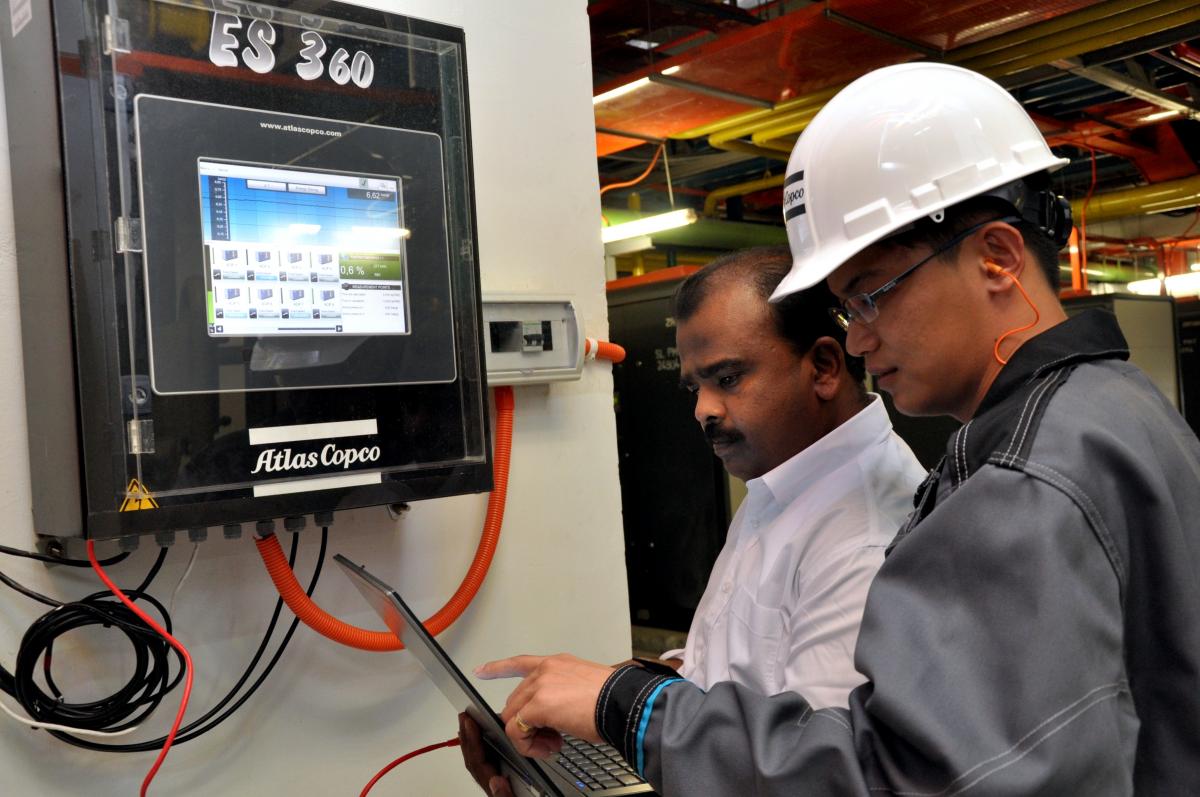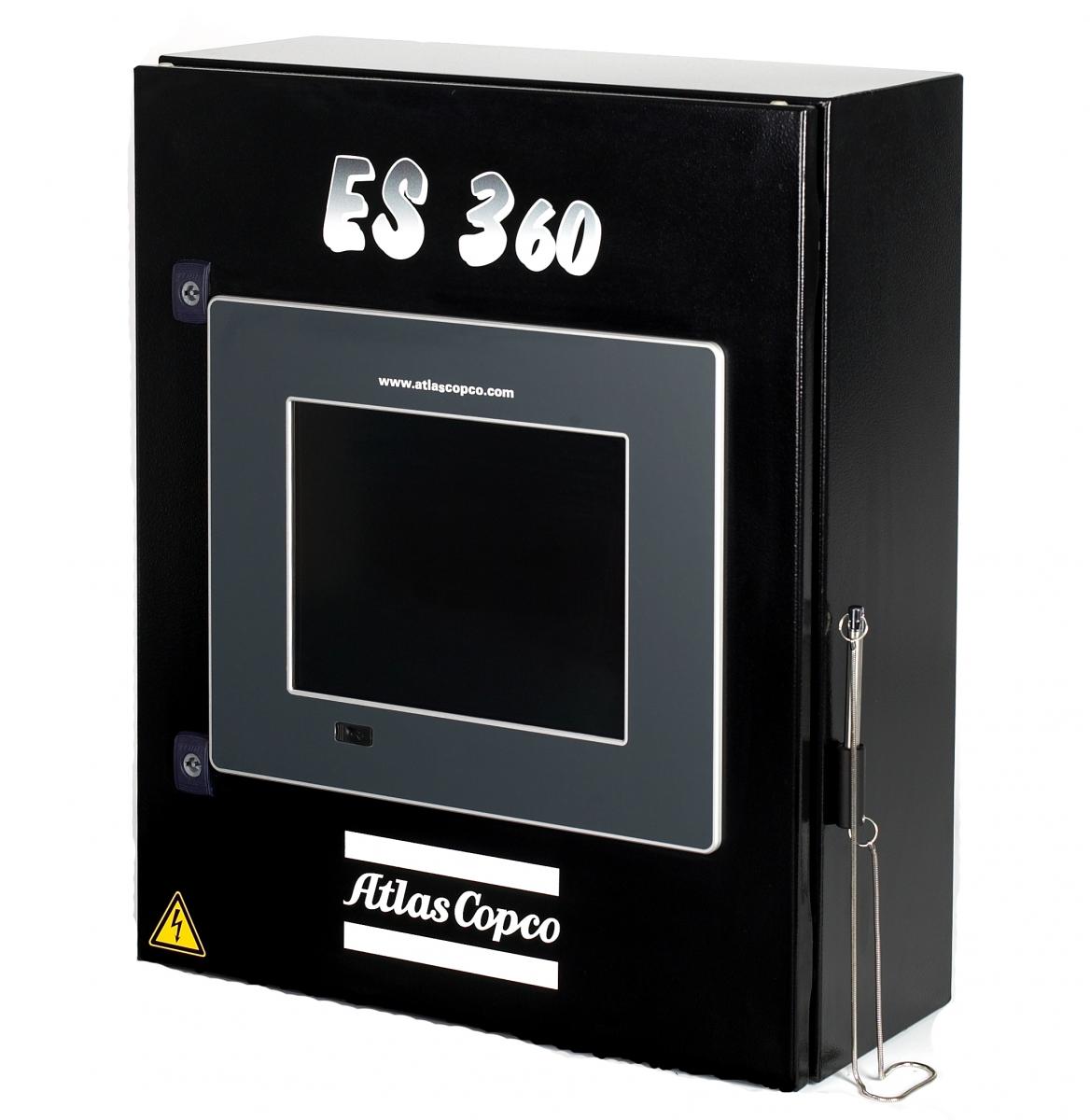A large multi-service public utility provider was faced with an ongoing problem. The utility, which services 93,000 retail and wholesale customers, employed five oil-free compressors at one power generation facility, but, if they needed to take down Unit 2 at the facility, it almost always pulled Unit 1 down with it, overloading the system’s capacity and causing service interruptions.
The utility asked Atlas Copco to review the system, and the team analyzed the facility and suggested a system reconfiguration that implemented an integrated compressor control system. With some minor modifications, the controller began monitoring and directing the system’s various components, including dryers and valves, that eliminated system failures, properly dividing operating times among compressors and relegating the back-up compressors to exactly that – something that could serve as a redundancy, rather than an over-reliant crutch.
The resulting changes reduced the system’s overall pressure load from 100 psi to 85 psi, resulting in a seven percent savings that could then be passed along to the utility’s customers.
As an additional benefit, the reconfiguration and inclusion of this remote system controller also will extend the life of the system’s compressors because its operational hours are now more even and lower. This also helps reduce maintenance costs while also increasing the life expectancy.

An Atlas Copco System Assessment at a Public Utility Reduced Pressure From 100 to 84 psi
Another utility company in the Pacific Northwest experienced similar difficulties. Atlas Copco conducted testing on the system and, coupled with a three-month trial, determined that the company would realize a return on investment for the compressor controllers in only four months. It is safe to say these two utility providers are not alone and did not face a situation that was uniquely theirs.
The Atlas Copco controllers in both scenarios monitored and adjusted the compressor load and deployed a system that altered the compressor mix and selected the adjusted combination to ensure optimal productivity and reduced energy dependency.
This provides a textbook example of ways a compressed air system that is optimized and regulated by integrated controllers can reduce energy and operational costs. By reducing system pressure, an operator is able to regulate the system within a predefined window that optimizes the compressors’ performance. Stable pressure levels add to lower energy consumption and system optimization, particularly with the inclusion of variable speed drive compressors.
An air compressor system controller can open or close valves to alter the system’s configuration, shutting down or starting up dryers that, in conjunction with integrated dew point monitors, eliminate moisture to keep the system operating evenly, without pressure drops or spikes that could disrupt service.
Additionally, when a compressed air system knows to distribute the work load equally, rather than cycling up and down independently, maintenance costs are also reduced because the machines all experience simultaneous wear that allows maintenance to be scheduled and performed at regular intervals, across the board, as opposed to intermittently, when the system’s parts operate more independently. Maintenance can also be scheduled for the entire system ahead of time, avoiding unexpected interruptions.
Despite stories and case studies that tout the benefits of the use of a more automated compressed air system that is regulated through a series of integrated controllers, reluctance to introduce compressed air sequencing – fueled largely by a fear of not being able to determine the ROI – often remains.

Compressor Room Remote Monitoring
A comprehensive audit or air scan can reveal opportunities to optimize a compressed air system. Using the logged information, a team of compressed air analysts will compile a comprehensive and detailed report, including cost analysis, graphs and the suggested starting points needed to improving the compressed air system. Technology has also made compressor control systems more sophisticated but easier to read and operate than even just 10 years ago.
The Department of Energy, in its push to reduce energy dependency, has developed a wealth of information that outlines innovative ways to reduce compressed air system pressure, lowering energy loads – and costs – as a result.
A central controller can monitor, measure, and direct optimal sequencing of a compressed air system’s numerous components through a series of valves that direct and redirect air flows through the system’s various compressors, dryers and other measurement equipment to produce a dependable and efficient network. Many times, the inclusion of a central control system can reduce energy efficiency by 10 percent. Applications for mobile phones and tablets can also provide an additional level of real-time remote monitoring and control of one or many compressed air systems from almost any location.
Energy consumption typically represents about 80 percent of a compressed air system’s total life cycle cost. Finding ways to reduce this cost often requires a shift in thinking and recognition of the ways today’s advanced technology can enhance a system, reducing energy dependency and the associated costs. Is that worth a look?

A ES 360 Data Logger used in System Assessments
For more information please contact Paul Humphreys, Atlas Copco, tel: 866-546-3588, http://www.atlascopco.us/usus/.
To read more Technology articles, visit www.airbestpractices.com/technology/compressor-controls.




